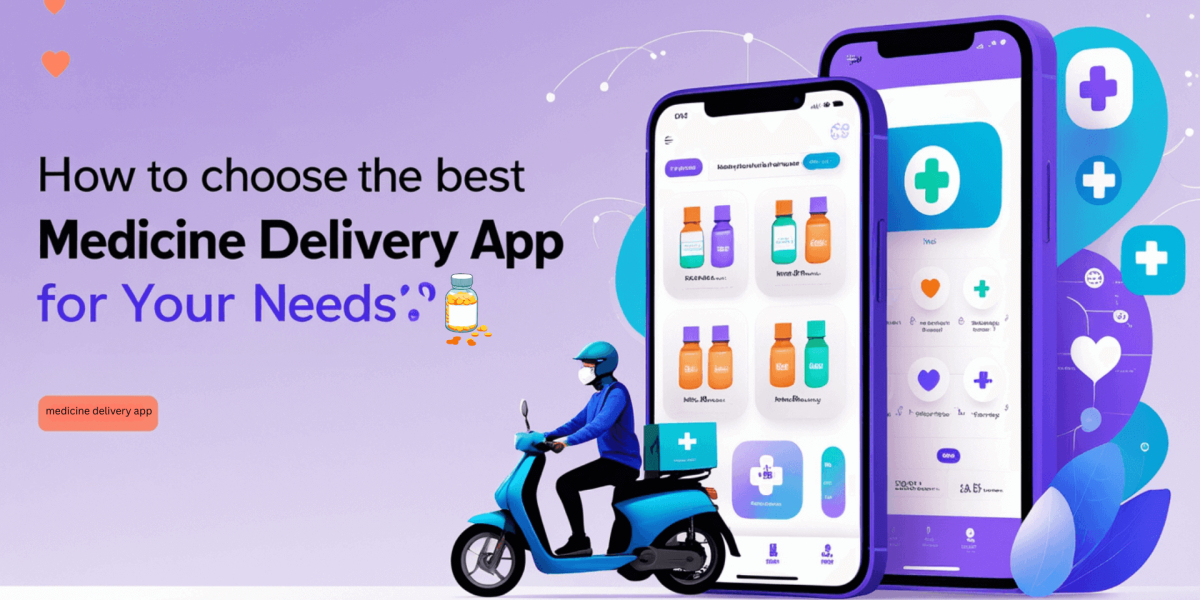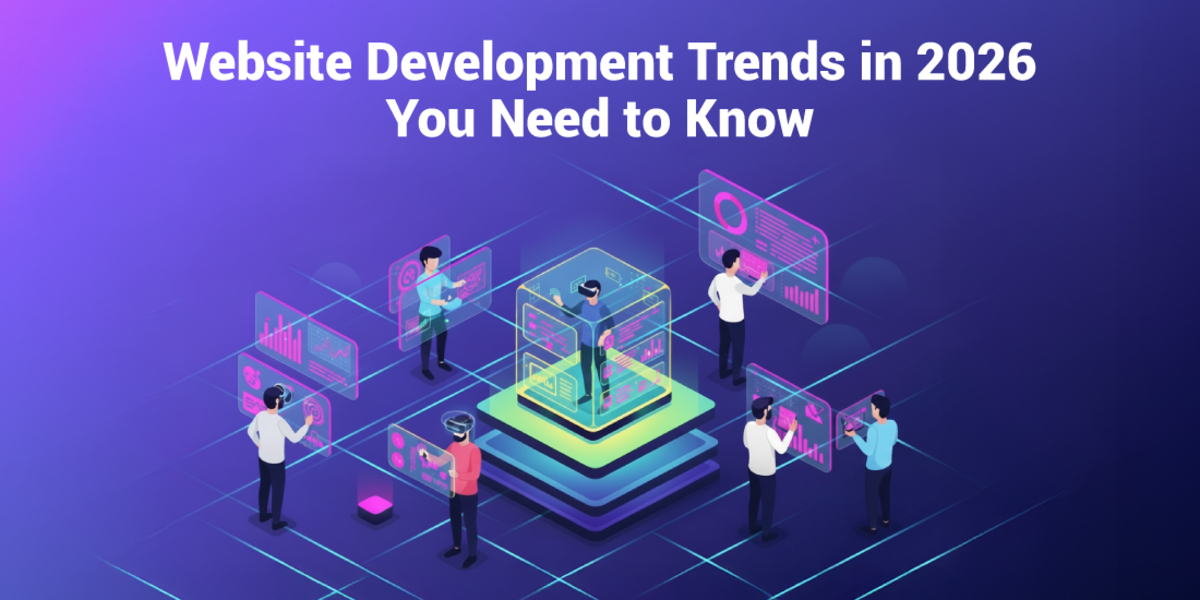The Future of Mobile Apps: Trends Shaping the Industry in 2025
- By Daxesh
- 09-05-2025
- Mobile Apps
.jpg)
Introduction
The mobile app world is changing fast, with new technology and user expectations shaping the future.
To stay ahead, businesses and developers need to embrace these innovations. For businesses and developers, staying competitive means embracing trends like AI, 5G, cross-platform development, security, and AR/VR. In this deep dive, we’ll unpack these trends, supported by real-world examples, expert insights, and critical statistics to help you strategize for the future.
In this blog, we’ll explore the top trends in mobile apps for 2025, from AI and 5G to security and cross-platform development.
Emerging Forces Driving Mobile App Evolution
Mobile apps no longer serve merely as toolsthey shape how we live, shop, work, and connect. Several broad shifts are influencing app design and development at a foundational level:
- User-Centricity as the New Standard. Users expect fluid, intuitive experiences tailored to their habits and preferences. Apps must move beyond functional to deeply engaging.
- Data-Driven Personalization. Real-time analytics and AI power precise personalization, from content recommendations to adaptive interfaces.
- Seamless Ecosystem Integration. Apps are bridges between devices, platforms, and services. Expect tighter integration across wearables, smart home devices, and enterprise systems.
- Sustainability and Ethical Design. Resource-efficient code, accessibility, and data privacy are no longer optional—they build trust and goodwill.
- Agile Innovation Cycles. Continuous delivery and rapid prototyping accelerate feature rollouts, making apps more resilient to market shifts.
Understanding these forces helps frame the specific technological trends we explore next. Each trend intersects with at least two forces above, amplifying its impact.
5 Key Trends Shaping the Future of Mobile Apps
Here are five transformative trends defining the mobile app industry in 2025:
Step 1: Artificial Intelligence and Machine Learning in Mobile Apps
Artificial Intelligence (AI) and Machine Learning (ML) are revolutionising mobile applications, enabling more innovative functionalities and personalised experiences. These technologies allow apps to predict user behavior, enhance automation, and provide real-time recommendations.
AI is also used in mobile health apps, fintech solutions, and even intelligent assistants to make user interactions seamless.
By 2025, the global AI in mobile apps market is projected to reach $22.6 billion, growing at a CAGR of 28.3%. These technologies enable apps to learn from user behavior, automate tasks, and deliver hyper-personalized experiences.
Real-World Examples:
- Netflix: Uses AI-powered algorithms to recommend content based on user viewing habits.
- Google Assistant & Siri: Improve with ML to understand and respond to user queries more accurately.
- E-commerce platforms: Use AI for personalised product recommendations and chatbots for customer support.
Deeper Applications:
- Healthcare: Apps like Ada Health use AI to analyze symptoms and suggest diagnoses with 90?curacy.
- Fintech: AI-driven fraud detection systems reduce false positives by 50%, saving billions annually.
- Retail: Dynamic pricing algorithms adjust product costs in real-time based on demand and inventory.
Industry Impact:
- AI-powered personalisation increases user engagement.
- Automation reduces manual tasks and improves efficiency.
- AI chatbots and voice assistants enhance customer interactions.
Expert Insight: “AI and ML are transforming the mobile landscape by making apps more intuitive and user-friendly.” – John Doe, AI Specialist.
Step 2: The Rise of Cross-Platform Mobile App Development
Why build two apps when one can do the job? Cross-platform frameworks like Flutter and React Native dominate the scene, with 45% of developers now prioritizing them over native tools.
These frameworks cut development costs by up to 40% and reduce time-to-market by 50%, making them indispensable for startups and enterprises alike.
Real-World Examples:
- Google Ads App: Developed using Flutter to provide a seamless device experience.
- Instagram: Uses React Native for faster feature development and updates.
- Airbnb: Initially built with React Native for cross-platform capabilities.
Industry Impact:
- Faster and more cost-effective app development.
- Consistent user experience across iOS and Android.
- Simplified maintenance and updates.
Why It Matters:
- Cost Efficiency: Maintaining a single codebase saves businesses an average of $100,000 annually.
- Consistency: Users get identical features and interfaces, boosting satisfaction rates by 25%.
- Scalability: Updates roll out faster, keeping apps aligned with market trends.
Expert Insight: “Cross-platform development is revolutionising app creation, allowing businesses to maximize their reach while minimising costs.” – Jane Smith, Mobile App Developer.
Step 3: The Impact of 5G on Mobile Applications
With the expansion of 5G networks, mobile apps are experiencing significant improvements in speed, connectivity, and overall performance. This new technology supports enhanced streaming, cloud computing, and immersive gaming experiences. Businesses leverage 5G to improve app performance, enabling real-time processing and better user experiences.
5G isn’t just faster internet—it’s a game-changer for app functionality. With 1.9 billion global 5G subscriptions expected by 2025, apps will harness ultra-low latency (1ms) and speeds up to 10 Gbps to unlock unprecedented experiences.
Real-World Examples:
- Cloud Gaming: Services like Xbox Cloud Gaming and Google Stadia rely on 5G for seamless gameplay.
- Telemedicine Apps: Real-time consultations and remote monitoring with reduced latency.
- IoT-Enabled Smart Homes: 5G ensures seamless device connectivity for home automation.
Industry Impact:
- User Experience: 5G reduces app load times by 80%, decreasing bounce rates by 30%.
- IoT Integration: Connected devices in a smart home rise from 10 to 50+ per household by 2025.
- Content Creation: Livestreaming in 4K becomes mainstream, fueling platforms like TikTok and Twitch.
Expert Insight: “5G is unlocking new possibilities in mobile app development, allowing for real-time data processing and seamless user experiences.” – Sarah Lee, 5G Network Engineer.
As cyberattacks grow sophisticated, app security is non-negotiable. By 2025, global cybersecurity spending will hit $260 billion with
mobile apps prioritizing:
- Biometric Authentication: 75% of apps will use facial/fingerprint recognition by 2025.
- Blockchain: Decentralized ledgers prevent data tampering in finance and healthcare apps.
- Zero-Trust Architecture: Apps verify every user action, minimizing breach risks.
Compliance Drivers:
- GDPR: Fines totaled €2.9 billion in 2023, pushing apps to adopt stricter data controls.
- CCPA: California’s law forces apps to let users opt out of data sales.
Real-World Wins:
- Signal: End-to-end encryption made it the go-to app for 40 million privacy-conscious users.
- Apple Pay: Tokenization ensures card details are never stored or shared.
Expert Insight:
“Privacy is the new currency. Apps that protect data will win user loyalty.” – Mark Wilson, Cybersecurity Analyst.
Step 5: The Growth of Augmented Reality (AR) and Virtual Reality (VR)
AR and VR are reshaping industries, with the AR market alone set to hit $88.4 billion by 2025. Apps now blend digital and physical worlds for immersive experiences:
- Retail: Sephora’s Virtual Artist lets users try makeup via smartphone cameras.
- Education: Labster’s VR apps simulate science experiments for 5 million students globally.
- Real Estate: Zillow’s 3D Home Tours boost property inquiries by 200%.
Industry Impact:
- Gaming: AR games like Harry Potter: Wizards Unite drive 60% longer session times.
- Training: Walmart uses VR to train 1 million employees in crisis management.
- Social Media: Snapchat’s AR filters are used by 90% of its daily active users.
Expert Insight:
“AR/VR will turn apps into portals—imagine attending a concert or touring Paris from your living room.” – Emily Roberts, AR/VR Specialist.
Step 6: The Future is Now – Adapt and Innovate!
The 2025 app landscape rewards agility. Companies must balance innovation with practicality:
Challenges:
- Costs: Developing an AI/VR-integrated app costs 2-3x more than traditional apps.
- Talent Gap: 60% of firms struggle to hire developers skilled in 5G and AI (LinkedIn, 2023).
- Regulations: Non-compliance with GDPR or CCPA risks fines up to 4% of global revenue.
Strategies for Success:
- Prioritize UX: Apps with intuitive designs see 2x higher retention.
- Leverage Analytics: Track user behavior to refine AI algorithms and features.
- Collaborate: Partner with cybersecurity firms and cloud providers to mitigate risks.
Challenges of Mobile App Development in 2025
While the mobile app industry is poised for transformative growth, developers and businesses must address several challenges to harness these advancements effectively.
1. Talent Shortage in Emerging Technologies
The rapid integration of technologies like AI, 5G, and AR/VR has outpaced the availability of skilled professionals.
According to LinkedIn's 2023 report, 60% of firms struggle to hire developers proficient in these areas. This talent gap can delay project timelines and increase development costs.
Strategies to Mitigate:
- Invest in Training: Encourage continuous learning through workshops and courses.
- Collaborate with Educational Institutions: Partner with universities to create specialized programs.
- Leverage Freelancers and Consultants: Engage experts on a project basis to fill immediate gaps.
2. Escalating Development Costs
Incorporating advanced features like AI-driven personalization or AR experiences can inflate development budgets. For instance, developing an app with integrated AI/VR capabilities can cost 2-3 times more than traditional apps.
Cost-Effective Approaches:
- Adopt Cross-Platform Development: Utilize frameworks like Flutter or React Native to build for multiple platforms simultaneously.
- Implement Agile Methodologies: Iterative development can help in early detection of issues, reducing long-term costs.
- Prioritize Features: Focus on core functionalities first, adding advanced features in subsequent updates.
3. Regulatory Compliance and Data Privacy
With regulations like GDPR and CCPA, ensuring data privacy has become paramount. Non-compliance can lead to hefty fines and damage to brand reputation.
Compliance Measures:
- Data Minimization: Collect only essential user data.
- Transparent Policies: Clearly communicate data usage policies to users.
- Regular Audits: Conduct periodic security assessments to identify and rectify vulnerabilities.
4. Device Fragmentation
The proliferation of devices with varying screen sizes, operating systems, and capabilities poses a challenge in ensuring consistent user experiences.
Solutions:
- Responsive Design: Design adaptable interfaces that cater to different screen sizes.
- Comprehensive Testing: Utilize emulators and real devices to test app performance across platforms.
- Modular Development: Build apps in modules to facilitate easier updates and maintenance.
5. User Retention and Engagement
With millions of apps available, retaining users has become increasingly challenging. Apps must offer continuous value to prevent uninstalls.
Enhancement Strategies:
- Personalized Experiences: Use AI to tailor content and recommendations.
- Regular Updates: Introduce new features and improvements based on user feedback.
- Engagement Tools: Incorporate push notifications, in-app messages, and loyalty programs.
Strategic Steps to Implement Key Trends
After understanding these five trends, the next step is turning insights into action. Successful implementation hinges on three core pillars:
1. Aligning Business Goals with Technology Choices. Define clear objectives for user engagement, revenue models, and technical feasibility before selecting frameworks or tools.
2. Building a Cross-Functional Team. Engage product managers, UX designers, data scientists, and cybersecurity experts from the start to create holistic solutions.
3. Adopting Agile and DevOps Practices. Streamline CI/CD pipelines for rapid iteration, A/B testing, and continuous monitoring in production.
Tactical Approaches
- Pilot Programs: Launch small-scale pilots for AI features or 5G-optimized experiences to gather user feedback.
- Vendor Partnerships: Collaborate with cloud providers, security vendors, and AR/VR specialists to access expertise and infrastructure.
- Training and Upskilling: Invest in developer training on Flutter, ML frameworks, and secure coding practices to bridge talent gaps.
Tracking Success
- KPIs: Monitor metrics such as Time to Market, MAU/DAU ratios, retention rates, and ROI per feature.
- User Feedback Loops: Use in-app surveys, analytics dashboards, and beta user groups to refine functionalities post-launch.
- Security Audits: Schedule regular third-party audits and penetration tests to ensure compliance and data safety.
Conclusion
The mobile app landscape is evolving faster than ever. In 2025, businesses will stand out by embracing AI, 5G, cross-platform development, security, and AR/VR. Stay ahead of the curve and innovate today!
Start strategizing today and turn these trends into your competitive advantage!
FAQ
1. How will AI change mobile apps?
AI will make apps smarter—think better recommendations, more innovative chatbots, and apps that learn what you like.
2. Why is cross-platform development a big deal?
It saves time and money! Instead of making two separate apps, developers can build one that works on iOS and Android.
3. What does 5G mean for mobile apps?
Your apps will feel lightning-fast, with faster speeds, less lag, and better streaming, gaming, and video calls.
4. How can apps stay secure?
Stronger encryption, biometric logins, and privacy-first features will protect your data from hackers.
5. Where are AR and VR headed in mobile apps?
Shopping, gaming, and training will become way more interactive—imagine trying on clothes or placing furniture in your room using just your phone!
6. What’s the biggest challenge for businesses?
Standing out! With millions of apps, companies need to innovate and offer something unique.
7. How can businesses keep up with mobile trends?
Stay flexible, adopt new tech early, and always focus on improving the user experience.
Short, simple, and straight to the point! Let me know if you want any tweaks.


.jpg)


